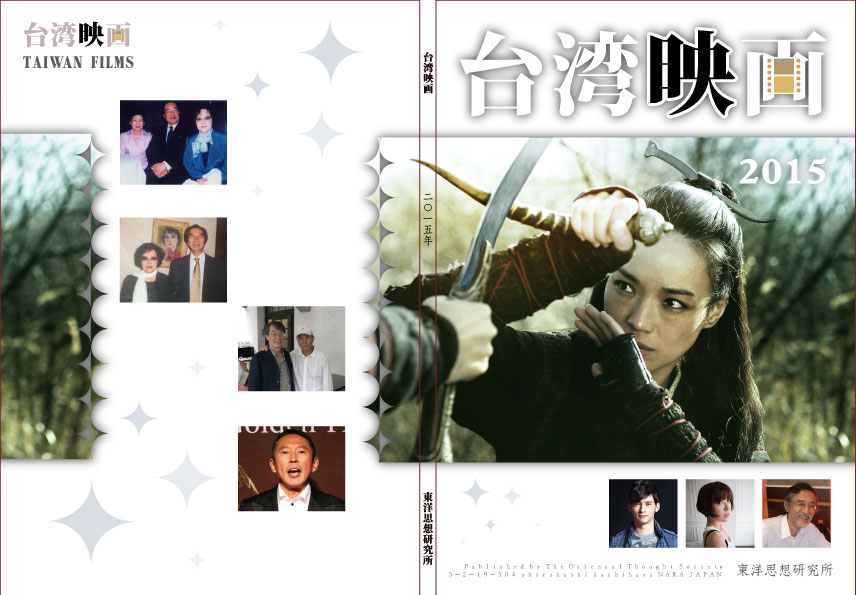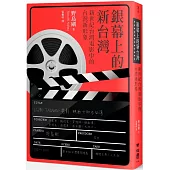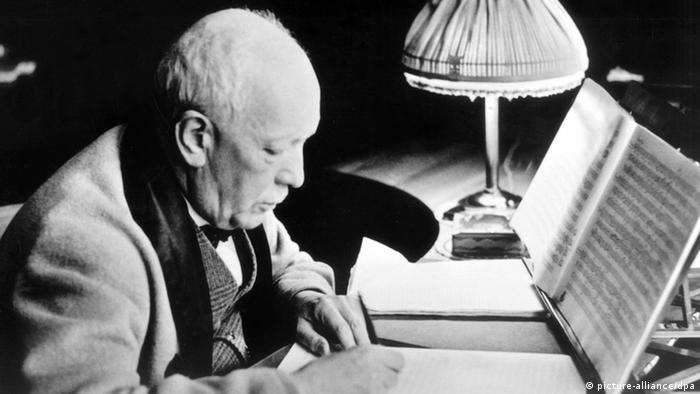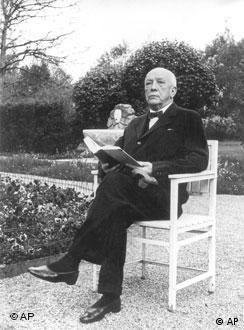French novelist and poet André Gide was born in Paris on this day in 1869. He was awarded the Nobel Prize for Literature in 1947.
"To know how to free oneself is nothing; the arduous thing is to know what to do with one's freedom.
--from "The Immoralist" (1902) by André Gide
--from "The Immoralist" (1902) by André Gide
In The Immoralist , André Gide presents the confessional account of a man seeking the truth of his own nature. The story's protagonist, Michel, knows nothing about love when he marries the gentle Marceline out of duty to his father. On the couple's honeymoon to Tunisia, Michel becomes very ill, and during his recovery he meets a young Arab boy whose radiant health and beauty captivate him. An awakening for him both sexually and morally, Michel discovers a new freedom in seeking to live according to his own desires. But, as he also discovers, freedom can be a burden. A frank defense of homosexuality and a challenge to prevailing ethical concepts, The Immoralist is a literary landmark, marked by Gide's masterful, pure, simple style.
André Gide
André Paul Guillaume Gide est né à Paris en ce jour en 1869.
"Savoir se libérer n'est rien; l'ardu, c'est savoir être libre."
-- André Gide, L'immoraliste (1902)
-- André Gide, L'immoraliste (1902)
2010年4月13日星期二
1981年遠景的諾貝爾文學獎全書《紀德卷1947》為《窄門》 (揚澤)和 《偽幣製造者》(孟祥森)
馬克貝格貝德《紀德及其作品》頁393-408 《紀德得獎經過》頁409-14 都可參考 該文引用《如果麥子不死》多次
Les nourritures terrestres
《如果麥子不死》Si le grain ne meurt - 1926 (translated as If It Die)
作者:紀德著出版社:志文出版日期:1990年10月15日 / 1979 孟祥森譯自英文本這本書關於 《人間糧食》的銷路有一參考兩日文本 '被忽略10/20年之爭議'Les nourritures terrestres - 1897 (translated as The Fruits of the Earth)Gide 再1926年新版中說 前十年只賣500本所以問題是10年/20年或者30年
《偽幣製造者》有三人名Athalie/ Tar·tuffe/Cinna 孟祥森只查得一人
現在網路發達 可以補充之:
French Literature Companion:Athalie |
French Literature Companion
Racine's last tragedy (1691), composed like Esther for performance at Saint-Cyr. It is a five-act play, magnificently written, with choruses between the acts. Based on accounts in the books of Kings and Chronicles, it tells of the overthrow of the usurper Athaliah by forces loyal to the house of David and the boy king Joas (a rare stage appearance by a child in 17th-c. theatre). The rising is managed by the inflexible high priest Joad, but the influence of Jehovah is felt throughout the play. It can be read either as the tragedy of the queen, the latest stage in the unending feud of two warring camps, or as a triumphal hymn to the true God, whose purposes are fulfilled by the crowning of Joas, the precursor of Christ. The play has also been interpreted as referring to contemporary events, in particular the English Revolution of 1688. It was greatly admired in the 18th and 19th c., even by those who, like Voltaire, did not approve of its religious message.
****
tar·tuffetar·tufe(tär-tʊf', -tūf')

also
n.
A hypocrite, especially one who affects religious piety.
[After the protagonist of Tartuffe, a play by Molière.]
tartufferytar·tuf'fe·ryn.(tahr-TOOF)

noun
A hypocrite who feigns virtue, especially in religious matters.
Etymology
After the main character in Tartuffe, a play by Molière, pen name of Jean-Baptiste Poquelin (1622-1673). As if to prove themselves, the religious authorities in Paris had the play banned soon after it was introduced
Usage
"Tony Blair is like Harold Wilson, an empty vessel whose strength derives from his emptiness. (Religion is so often a substitute for depth.) Because he is a Tartuffe who does not really believe in anything, he is brilliant at seizing advantage; when he can't manipulate events, he surfs over them."— A.N. Wilson; Further Trials of Teflon Tony; The Evening Standard (London, UK); May 19, 2003.
****
French Literature Companion:Cinna |
Tragedy by Pierre Corneille, first performed 1641. Inspired by his love for Émilie, whose father has been killed by the Roman emperor Augustus (Auguste), Cinna leads a plot against Auguste's life, and persists in it even when he and his fellow conspirator Maxime have been consulted by the blood-weary emperor, who wants to abdicate. The conspiracy is betrayed by Maxime, who is vainly in love with Émilie. Helped by the advice of his wife, Livie, Auguste conquers the impulse to have the conspirators executed. His clemency wins the hearts of Cinna, Maxime, and even the irreducible Émilie, and the play ends on a note of moral and political apotheosis.
2007.10.22
安德烈‧紀德《偽幣製造者》一書中的紋心結構
這"紋心"mise en abyme是新辭 參考紋/文
因為網路上的"內容簡介"沒附原文 讀者一定搞不清楚
我作過詞條 "我們需要索引來詳細審查一些術語 譬如說 本書翻譯成"重重深淵"的 :在第一章類似「紋中紋手法(mise en abyme)」(ミザナビーム(mise-en-abyme)とは、フランス語で「深淵に入る」と言う意味で、英語では"put in the abyss"と訳されます。 また、ミザナビームの別名として、入れ子構造の物語(Chinese box narrative)、...)….."
1947年安德烈‧紀德榮獲諾貝文學獎。紀德一生創作20多部作品,1925年完成的《偽幣制造者》是一部著名的小說,在西方產生很大的影響。本書作者萬德化對這部小說的思想、寫作技巧和“紋心結構”進行了深入和詳細的分析。
萬 德化,現任澳門利氏學社出版的雙語季刊《神州交流》——Chinese Cross Currents的副主編和書評編輯。他在波蘭克拉科賈吉龍大學獲得法國文學碩士學位,並在耶穌會的巴黎塞佛爾中心獲得天主教神學碩士學位。目前,他是巴 黎第七大學漢學專業博士生,專攻二十世紀中法文學。他已經在《神州交流》上發表了數篇文章,並且將著名客家作鐘理和(1915-1960)的小說《笠山農 場》翻譯成法文。萬德化最近任命為澳門利氏學社的社長。
萬 德化,現任澳門利氏學社出版的雙語季刊《神州交流》——Chinese Cross Currents的副主編和書評編輯。他在波蘭克拉科賈吉龍大學獲得法國文學碩士學位,並在耶穌會的巴黎塞佛爾中心獲得天主教神學碩士學位。目前,他是巴 黎第七大學漢學專業博士生,專攻二十世紀中法文學。他已經在《神州交流》上發表了數篇文章,並且將著名客家作鐘理和(1915-1960)的小說《笠山農 場》翻譯成法文。萬德化最近任命為澳門利氏學社的社長。
法國作家安德烈‧紀德(1869—1951)對于20世紀三、四十年代的中國青年讀者來說並不陌生。許多老一輩學人當年都很喜愛這位率真的法國 作家。當紀 德的作品剛被介紹到中國來時,我們的老前輩們正處在思想活躍又彷徨的青少年時期,紀德熱情洋溢的作品給了他們沖破傳統的束縛,尤其封建家庭及其意識的束 縛,到外邊世界去闖一闖,看一看的勇氣,也提高了他們認識自我、認識他人、認識社會的能力。就本人有限的接觸而言,我周圍的師長們,幾乎個個都在青年時代 讀過紀德的作品,並且眾口一詞稱之為值得一讀的好作品。當年,盛成的《紀德研究》和張若茗的《紀德的態度》都已達到了相當的學術水平,紀德本人為之很表感 激。
可是,在20世紀50至70年代,紀德從中國青年讀者的視野中消失了,很少再有人提起這位曾經在世界文壇上掀起過波瀾的法國著名作家……。直至 80年代, 紀德作品的中譯本及對紀德的研究,又開始出現在中國青年讀者的讀書目錄上了。90年代後期,紀德的《訪蘇聯歸來》的幾個中譯本相繼與讀者見面;同一時期, 羅曼‧羅蘭的《莫斯科日記》按作者意願于成書後50年公開出版,它也很快被譯成了中文出版。人們驚訝地發現,紀德和羅曼.羅蘭兩人的蘇聯觀感幾乎同出一 轍,不同的是,羅曼.羅蘭當時決定50年後再發表他的《莫斯科日記》,安然無事,在中國讀書界始終被尊為偉大作家;而紀德卻因在訪蘇聯歸來之初就發表了他 的觀感,遭到了來自以前蘇聯為首的左翼陣營的批評、指責和圍攻。
目錄
安德烈‧紀傅(1869—1951)——生平前介
小說梗概
前言
簡介
第一章 紀德思想的多向性
第二章 《偽幣制造者》敘事形式的分析
1.獨白與自由的非直接風格
2.書信
3.對話
4.日記
5.敘事者
第三章 紋心結構︰全新的表達方式
1.紋心結構︰從巴洛克到新小說
結論
參考書目
附錄
附
[文學]鏡子與鏡子的游戲 2007-07-09 15:46:30 來源:南方都市報
曾 園
□自由撰稿人,湖北宜昌
博爾赫斯在一篇小說中寫道:“我依靠一面鏡子和 一本百科全書的結合,發現了烏克巴爾。”如果我們把最近出版的兩本書放在一起,我們也將發現另一空間的存在,這個空間儘管沒有博爾赫斯虛構的國度“烏克巴 爾”那麼神奇,但卻與他一直迷戀的鏡子有關。這兩本書是《偽幣製造者》和今年3月份出版的《安德烈‧紀德的〈偽幣製造者〉一書中的“紋心結構”》。
《偽幣製造者》裏的一個人物在寫一篇小說,書名也叫做《偽幣製造者》,所以被稱為“元小說”或“關於小說的小說”;小說中有的情節由兩個人物各自敘述一 次,這兩次講述是有差別的,倣佛是一個人的形象和鏡像之間的差異……這種手法被稱之為“紋心結構”,在西方藝術中有悠久的傳統,紀德在小說中創造性地運用 並發展了這一技巧。
萬德化在書中列舉了“紋心結構”的發展歷史和它在不同藝術中的表現形式。紋心結構(mise en abyme)來源於法語,是個不太好翻譯但頻繁被文論家使用的紋章學術語。在起初,指的是盾形徽章中又出現一個小的盾形,倣佛深淵一般。
中國讀者其實已經與該詞的不同譯名打過多年的交道了。這些年來已經有了“敘事內鏡”、“投入深淵”、“深淵結構”等多種譯法。在一本飽受批評的德裏達作 品漢譯本裏,德裏達在每一章都會提到這個詞,但該書的每一章都由一個不同的譯者來翻譯,於是讀者就會在這個詞不同的翻譯的坑洼或鼓包裏上下左右地顛簸。比 如說,這一章該詞叫做“盾上之盾”,在那一章裏它會神秘地變成“自身深淵”。即使有一個根據上下文就能迅速理解該詞的天才讀者,我想他也不能明白這些盾 啦、深淵啦說的原來是一個詞。
像博爾赫斯為兩面鏡子迷惑一樣,紀德初次接觸紋心結構就受到震動,他給保羅‧瓦 雷裏寫信說:“太吸引人 了!”“盾牌正面的圖案中央再鐫刻一個較小的同樣圖案。”他仔細研究了這種藝術並將之首次運用於小說《帕呂德》,在《偽幣製造者》中這種技巧已臻至完美。 小說中出現了三次自殺,兩次決鬥和兩場海難。這些互相映照的對稱事件不僅能加強讀者印象,還能收到多種藝術效果。
司湯達說,“小說是 沿著大路往來的一面鏡子”。紀德顯然不滿足於這種奴隸現實主義,他的小說人物愛德華一直寫日記,愛德華稱他的日記本“是我一直隨身攜帶的鏡子”。到了博爾 赫斯,我們不會忘記他一直醉心於一個不可能實現的設想,“當兩面鏡子對照的時候,更會出現無限延伸的倒影。”對鏡子的不同態度,決定了作家反映世界的獨特 方式。
作為學者的萬德化學養深厚,思維縝密,他將紋心結構置於歐洲文學藝術的悠久傳統中加以辨析。這一藝術技巧的微觀史向我們展現的景色卻異常豐富、美不勝收。值得一提的是此書包含了法語、英語和中文三個版本,避免了因翻譯問題造成理解的偏差,還便於不同層次的讀者閱讀。
(法)紀德 Gide 著《田園交響曲》漢文 版本可能近十 包括台灣的
田園交響曲
紀德——令諾貝爾文學獎評委們迷惑的作家(代序)
背德者
田園交響曲
人間食糧
新食糧
浪子歸來
附錄1︰1947年諾貝爾文學獎授獎辭
附錄2︰受獎演說
附錄3︰紀德生平及創作年表
背德者
田園交響曲
人間食糧
新食糧
浪子歸來
附錄1︰1947年諾貝爾文學獎授獎辭
附錄2︰受獎演說
附錄3︰紀德生平及創作年表
序
不過,諾獎評委的那些老先生也難得糊涂一回,在大多情況下,他們其是相當謹慎而保守的,往往掛一漏萬。遙遠的國度且不說,根本就不在他們的視野之內,就是 在眼皮底下,他們還漏掉了(僅就法國而言)馬爾羅、尤瑟納爾等一批大作家,甚至險些錯過了紀德這樣的大師級人物。
這 里比對一下兩位文學大師,羅曼‧羅蘭(1866—1944)和安德烈‧紀德(1869—1951),就多少能看出諾獎評委們的尷尬。兩個人生卒年代相 近,都以等身的著作經歷了二十世紀上半葉,算是等量齊名的作家。然而,羅曼‧羅蘭于一九一五年就獲得了諾貝爾文學獎,紀德還要等三十二年之後,到一九四七 年,在他七十八歲的高齡,才獲此殊榮,是因其“內容廣博和藝術意味深長的作品——這些作品從對真理的大無畏的熱愛,以銳敏的心理洞察力表現了人類的問題和 處境。”
其實,獲獎評語的這些作品,在二十世紀一二十年代,絕大部分都已經發表了,主要有幻想小說《烏連之旅》 (1893)、先鋒派諷刺小說《帕呂德》(1895)、散文詩《人間食糧》(1897)、沖擊傳統道德的記述體小說《背德者》(1902)、日記體小說《窄門》(1909)、傻劇之《梵蒂岡 的地窖》(1914)、日記體小說《田園交響曲》(1919)、前所未見的結構革命的創新小說《偽幣制造者》、自傳《如果種子不死》(1926)。此後, 在戲劇、游記、日記和書信方面,雖然還發表了大量著述,但是他的主要文學創作活動,到一九二六年就告一段落了,人稱“文壇王子”的地位已經確立。可是,諾 貝爾文學獎的評委們還要花上二十多年的時間,才寫出這樣一段評語,總算摸清了紀德的路數。
Works
Français
- Les Cahiers d’André Walter, 1891
- Le Traité du narcisse, 1891
- Les Poésies d’André Walter, 1892
![100%.png]()
- La Tentative amoureuse ou le Traité du vain désir, 1893
- Le Voyage d’Urien, 1893
- Paludes, 1895
![25%.png]()
- Amyntas, 1896-1906
- Les Nourritures terrestres, 1897
- El Hadj ou le Traité du faux prophète, 1899
- Philoctète ou le Traité des trois morales, 1899
- Le Prométhée mal enchaîné, 1899
- Le Roi Candaule, 1901
- L’Immoraliste, 1902
- Bethsabé, 1903
- Prétextes, 1903
- De l’influence en littérature (conférence, 1900)
![100%.png]()
- À propos des Déracinés (L'Ermitage, 1897)
![100%.png]()
- De l’influence en littérature (conférence, 1900)
- Saül, 1903
- Les Nouveaux Prétextes, 1903
- Le Retour de l’enfant prodigue, 1907-1909
- La Porte étroite, 1909
- Isabelle, 1911
![100%.png]()
- Les Caves du Vatican, 1914
![100%.png]()
- Souvenirs de la cour d’assises, 1914
- Numquid et tu ?, 1916-1917
- Si le grain ne meurt, 1919
- La Symphonie pastorale, 1919
- Corydon, 1920 (tirage privé à 21 exemplaires).
- Morceaux choisis, 1921.
- Pages choisies, 1921.
- Dostoïevsky, Plon, 1923.
- Incidences, 1924.
- Corydon, 1924.
- Caractères, La Porte étroite, 1925.
![Open book nae 02.svg]() Les Faux-monnayeurs, 1925.
Les Faux-monnayeurs, 1925. - Si le grain ne meurt, 1926.
- Le Journal des faux-monnayeurs, Éos, 1926.
- Dindiki, 1927.
- Voyage au Congo, 1927.
- Le Retour du Tchad, 1928.
- L’École des femmes, 1929.
- Essai sur Montaigne, 1929.
- Un esprit non prévenu, 1929.
- Robert, 1930.
- La Séquestrée de Poitiers, 1930.
- L’Affaire Redureau, 1930.
- Œdipe, 1931.
- Perséphone, 1934.
- Pages de Journal 1929-1932, 1934.
- Les Nouvelles Nourritures, 1935.
- Nouvelles Pages de Journal 1932-1935, 1936.
- Geneviève, Gallimard, 1936.
- Retour de l’U.R.S.S., 1936.
- Retouches à mon retour de l’U.R.S.S., 1937.
- Notes sur Chopin, 1938.
- Journal 1889-1939, 1939.
- Découvrons Henri Michaux, 1941.
- Œdipe
- Perséphone
- Le Treizième Arbre, 1942.
- Interviews imaginaires, 1943.
- Pages de Journal 1939-1942, 1944.
- Thésée, 1946.
![100%.png]()
- Souvenirs littéraires et problèmes actuels, 1946.
- Le Retour, 1946.
- Paul Valéry, 1947.
- Poétique, 1947.
- Le Procès, 1947.
- L’Arbitraire, 1947.
- Préfaces, 1948.
- Rencontres, 1948.
- Les Caves du Vatican, farce, 1948.
- Éloges, 1948.
- Robert ou l’Intérêt général, 1949.
- Feuillets d’automne, 1949.
- Anthologie de la poésie française, 1949.
![25%.png]()
- Journal 1942-1949, 1950.
- Littérature engagée, 1950.
- Posthume
- Égypte 1939, 1951.
- Et nunc manet in te, 1951
- Ainsi soit-il ou les Jeux sont faits, 1952.
- Le Récit de Michel, 1972.
- À Naples, 1993.
- Le Grincheux, 1993.
- L’Oroscope ou Nul n’évite sa destinée (scénario), 1995.
- Isabelle (scénario) avec Pierre Herbart), 1996.
- Le Ramier, 2002.
- Maurice Denis et André Gide, Correspondance (1892-1945), 2006.
Traductions
- Les Cahiers de Malte Laurids Brigge, de Rainer Maria Rilke, 1911
- L’Offrande lyrique (Gitanjali), de Rabindranath Tagore, 1913
- Typhon, de Joseph Conrad, 1918
- Œuvres choisies, de Walt Whitman, 1918
- Antoine et Cléopâtre, de William Shakespeare, 1920
- Amal et la Lettre du Roi, de Rabindranath Tagore, 1922
- Le Mariage du Ciel et de l’Enfer, de William Blake, 1922
- Récits de feu Ivan Pétrovitch Bielkine, de Alexandre Pouchkine, avec Jacques Schiffrin, 1928
![100%.png]()
- Hamlet, de William Shakespeare, 1944





















 With origins dating back to 1478,
With origins dating back to 1478, 








































 《我的世纪》德文版封面
《我的世纪》德文版封面  格拉斯特展"鼓动的世纪"记者会
格拉斯特展"鼓动的世纪"记者会 







